| Web
and Book design,
Copyright, Kellscraft Studio 1999-2017 (Return to Web Text-ures) |
 (HOME)
|
|
CHAPTER VII. IRISH INDUSTRIES IT is usually supposed that there is very little romance about industry or business of any sort. In general, this is doubtless true, but there is an element which enters into certain kinds of industry, which if not exactly romantic, is assuredly not prosaic. The cottage industries, as they have come to be popularly known, of Ireland, have this element of romanticism, or assuredly picturesqueness, which is not usually associated with the matter-of-fact throbbing loom and busy shuttle. This particular phase of industry has of late become somewhat of a fad, so far as people taking an interest in its product goes, though there is a very real, tangible, and practical side to it for the workers, who, perforce, might otherwise be in idleness. The public-spirited men and women who have encouraged this special industry, or industries rather, for it comprehends lace-making, embroideries, and homespun woollens, are to be thanked and congratulated by reason of the success which has resulted from their efforts. Everybody has a vague idea that there are certain products which come out of Ireland in large quantities. When called to specialize or enumerate them, they stop short at fine linen and bacon. Beyond this — what? There is but one way to find out, if one is not to visit Ireland itself, and that is from the government publications, Chamber of Commerce reports, and the like. These are dry reading, however, for some people impossible reading, and there is very little romance about them. When one actually visits Ireland, and sees the Limerick pig in all his gaucheries, and his product in sausages, hams, and bacons, there is perhaps more romance connected with it, for there is a certain picturesqueness which invariably surrounds him. It may be a red-skirted, blue-coated colleen, or it may be a green-trousered, pot-hatted gossoon, who is driving him to market, or it may be that the environment of his home is so squalid as to be picturesque, and suggests primitive conditions and romantic times that have long gone past in other parts of the world. To consider seriously just why the industries of Ireland are at the low ebb that they are, one has to realize that Ireland has ever been backward and unprogressive in developing her resources, though mostly this is because of oppression, as they call it in Ireland, and oppression, as a matter of fact, it is, or has been. Primarily there is a scarcity of coal in Ireland. There are no workings that are profitable, and of a good quality, that are opened up at the present time; at any rate, not of a quality to be compared with that obtainable elsewhere and in countries which have prospered more fully than has Ireland. One thing Ireland has, and has wofully neglected, is its supply of water-power such as has made many similar regions on the Continent of Europe thrifty and prosperous. It might be used to generate electricity; it assuredly could do so, as there are several swift flowing waters that would fill the requirements admirably, — the Falls of Ballyshannon, for instance. Perhaps some day, when some ingenious individual succeeds in getting motive-power out of the rise and fall of the tides, Ireland will become the most prosperous of any country in the world. 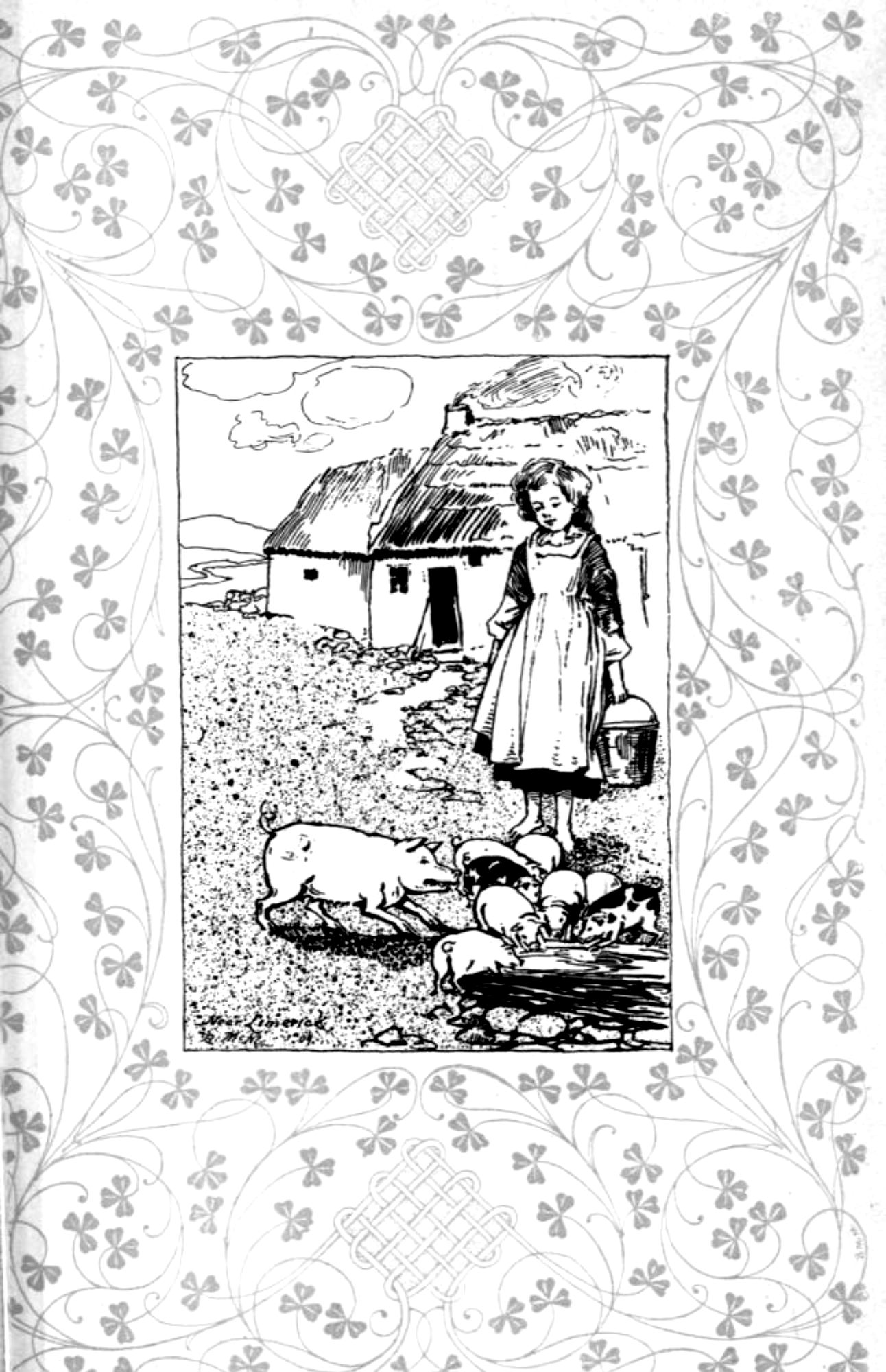 Limerick Pigs In the seventeenth century, smelted iron — Ireland being very rich in iron ore — was exported to London in large quantities. This trade does not exist to-day. As early as the sixth century Irish woollens were exported to Nantes, and in the fourteenth century there was a large demand for Irish serges in Italy. The woollen industry was given a great impetus in 1667 by the Duke of Ormonde, who induced five hundred Walloon families to settle at Clonmell, at Killarney, and at Carrick-on-Suir; but in 1698 the English manufacturers persuaded the Irish Parliament to prohibit the exportation of woollens. From Dean Swift we learn that by this act twelve thousand families were thrown out of employment in and near Dublin, and thirty thousand more elsewhere. It is of late years only that the cottage handicrafts, knitting, spinning, weaving of homespuns, and lace-making, have been given the great impetus which has now made them established industries, like the cottage cutlers of Barmen and Essen, in Germany, who fashion knife-blades from the crude product which they obtain from the large steel works near by. Formerly paper-making was very extensively conducted in the county of Dublin; but this is no longer the case. Who does not know the famous Irish linen? Strange to say, the best quality was known as Royal Irish linen. This assuredly was an effort on the part of some astute Irishman to capture outside trade, but his astuteness apparently did not extend to other things. The dictionaries received a new word in Balbriggan, which was the name of the cotton hosiery first made a hundred and fifty or more years ago at Balbriggan. Irish whiskey distilleries and the breweries of porter and stout have come to be recognized as premier establishments in their line, and, whatever the opponents of the liquor trade may say, these industries have done Ireland much good. Far more good, be it acknowledged, than that other brewer, Cromwell, ever did for it. 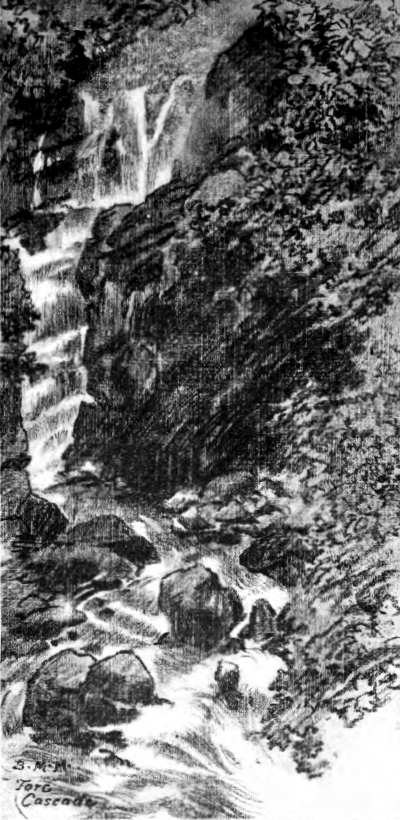 TORC CASCADE. The shipbuilding industry of Belfast ranks among the first establishments, if it is not the very first, in the world, and the allied industries, which produce ropes, cables, chains, and rigging, are likewise foremost in their class. These are mainly centred around Belfast, but an echo is heard at Londonderry, on the north coast. Porcelain of a rare and unique quality is manufactured at Belleek. So frail and delicate and so translucent is this ware that it stands quite in a class by itself. The paramount industry of Ireland is the spinning and weaving of linen and flax, mostly centred around Belfast. The great linen ware-houses of Belfast, with branches throughout the English-speaking world, and even on the Continent, are almost household names, and no product of a similar nature elsewhere produced at all enters into competition with the real Irish product. Besides the great establishments at Belfast, there are others, nearly as great, at Ballymena, Londonderry, Coleraine, and Lisburn. This great industry grew up at the summary closing of the woollen mills, prospered, and, if at first it did not take the place entirely of the woollen industry, it did so finally. In the mid-nineteenth century it has already reached huge proportions, and, while to-day the public undoubtedly buys a great deal that is not linen in the expectation that it is linen, and a great deal of linen that is not Irish linen in the hope or the belief that it is Irish linen, there is no question but that the trade has already advanced beyond the point where it was when it stood alone and supreme in the world. The trade has reached its present magnitude from the very small beginnings of a Huguenot refugee named Crommelin, who settled originally at Lisburn. The superiority of Irish linen is due primarily to the bleaching, which, of itself, depends upon the water and atmosphere, which at Belfast and the other places mentioned is apparently not equalled elsewhere in the world. To get the same results, it is said that a certain German manufacturer buys Irish yarn, — that is, linen spun in Ireland, — weaves it into cloth in Bohemia, sends it back to Belfast to be bleached, finally brings it back to his establishment in Germany, and sells it as — what? 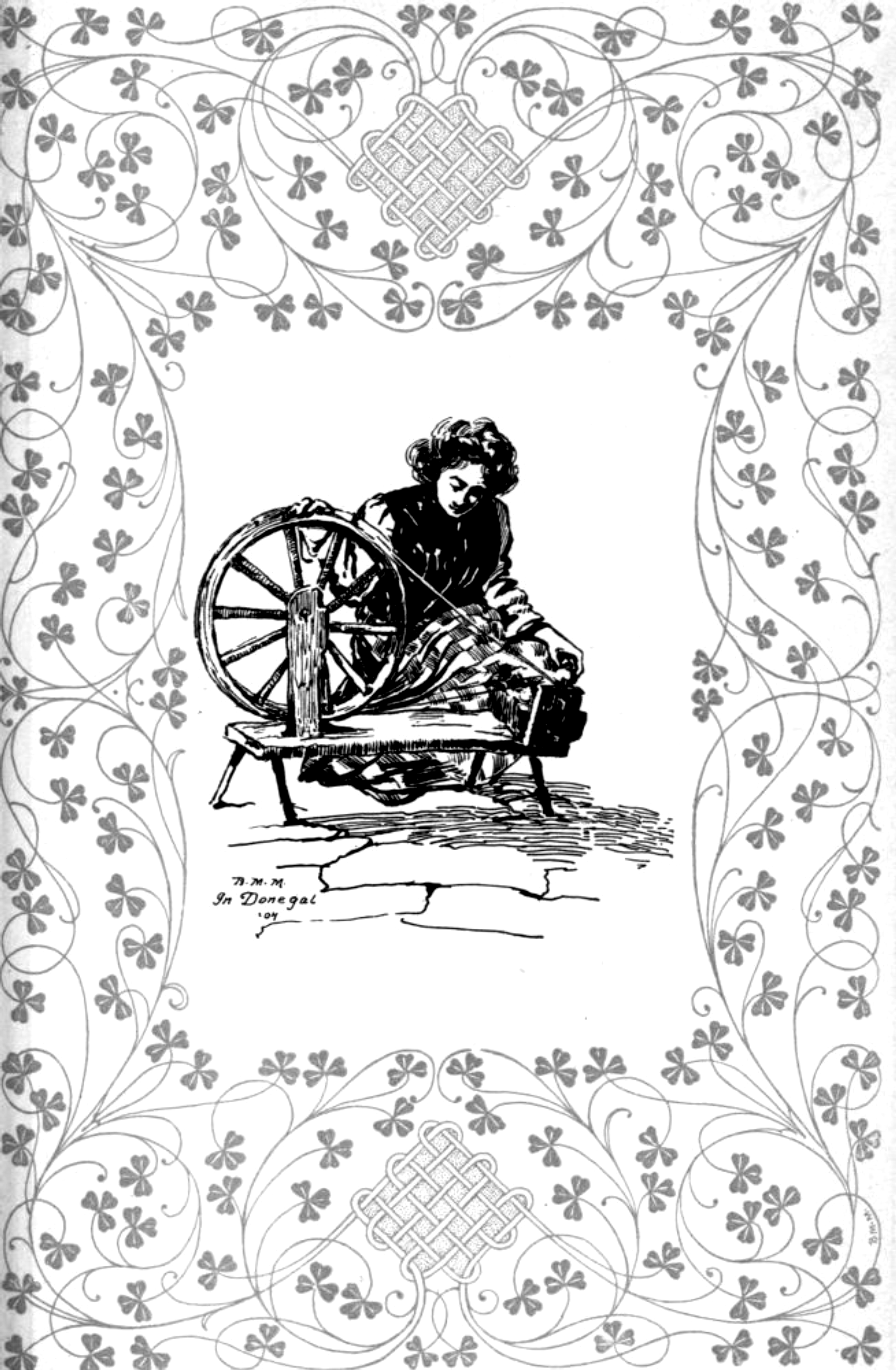 A Cottage Spinner The most varied and most successful cottage industries are at Limerick, Carrickmacross, Cork, Youghal, Kinsale, Crosshaven, Ardora, and Clones. Their specialty is lace of a delicate and elegant variety. The cottage woollens are mostly made in Donegal and Connemara, while the art of embroidery is followed most extensively at Belfast, Dublin, Dalkey, Garryhill, Sligo, Strabane, and Ballintra. There is one phase of trade that the Irish have neglected to develop of late, — the fisheries. More or less philosophically, as they think, they lay this to the Scotch, who are much more successful at the industry than themselves. This is not the fault of the Scotch; it is the folly of the Irish. At any rate, there is an inexhaustible supply of mackerel, herring, cod, hake, sole, turbot, lobsters, and even oysters to be found on the south and southwest coast of Ireland. In the fifteenth and sixteenth centuries this was a trade which was worked, and successfully worked, as records show, by Spaniards, Dutch and French fishermen, who came from their own fishing-grounds to angle in these more plethoric Irish waters. It was only in the nineteenth century that the Irish took up the industry in at all a commensurate manner, and by the famine years of the late forties they had 19,833 vessels, manned by 130,000 men and boys, in the trade. Then it steadily declined through succeeding years until 1894. In 1900 there were only 6,500 registered boats, employing 25,360 men, and the harvest which they gathered from the sea had but the value of £300,000. Truly this is a sad tale, and not a creditable one. The chief fishing stations are at Kinsale, Baltimore, Valentia, and Bearhaven. There are salmon to be had in almost every river estuary, and the taking of them has not been neglected, as has deep-water fishing. The chief industry of most countries is perhaps agriculture. Even in Ireland crops are raised, — crops of a sort must be raised, — but they are grown to nothing like the extent that they ought to be. 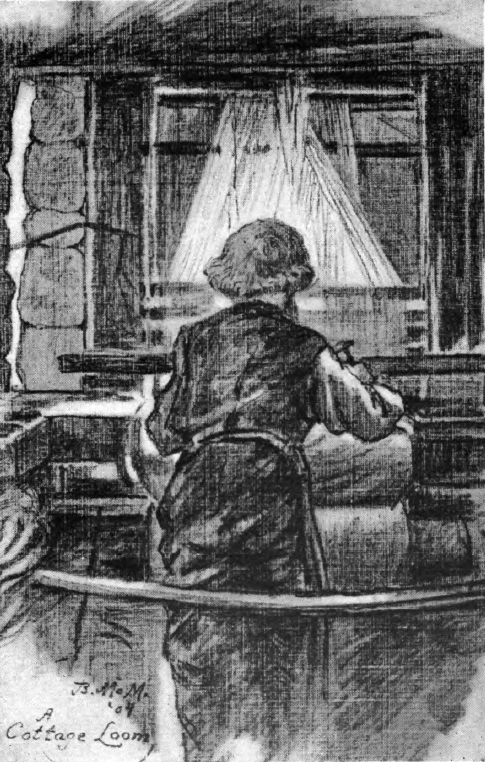 A COTTAGE LOOM. Probably Ireland’s record is not as bad as England’s in this respect; but landlordism, whatever that vague term may really mean, is certainly responsible for the minute proportions of this industry. In 1831 1,270,000 were engaged in agriculture, approximately 65½ per cent. of the population; in 1891, 49½ per cent., showing plainly that agriculture in Ireland is rapidly on the down grade. The most fertile counties are Tipperary and Limerick; Kerry is generally poor; but “Mounster,” as Spenser called it, was “of the sweetest soyle of Ireland.” Cattle-raising in Ireland is truly preëminent, as bald, unromantic statistics show. In Ireland there are 138 horses per thousand of the population. In England, but 36 only. There are 996 cattle in Ireland as against 152 in England; 951 sheep as against 511; and 278 pigs as against 69. 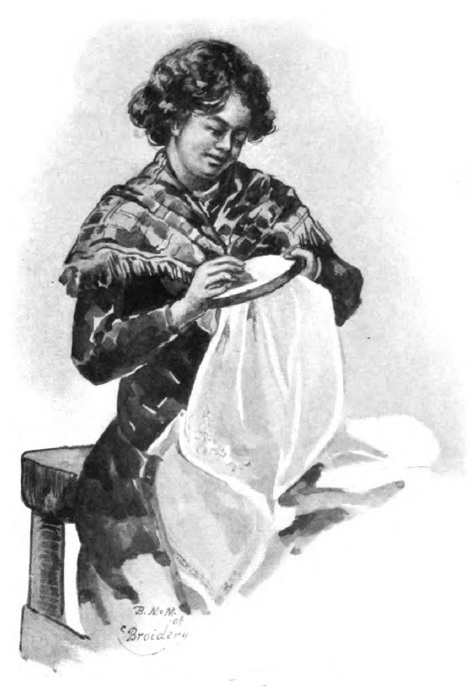 EMBROIDERING. The small farmer in Ireland is, it is true, uneducated to a surprising degree. He knows nothing of rotation of crops, and cultivates seldom more than two varieties. Artificial enrichment of the soil is a profound mystery to him, and he apparently would rather work a piece of reclaimed peat-bog than the most fertile valley that ever grew the products of the field. Truth to tell, the genuine Irish peasant hates the cultivation of the soil; he dislikes to dig in the earth, as he does to fish in the sea; but he rejoices in cattle-raising, and, above all, cattle-trading. He likes to drive them to market; he makes a regular holiday of it, and so do the rest of his family, as one who has ever met such a composite caravan on the road well knows. It is said that twenty thousand Irish go to England every autumn for the harvest. It seems a pity that these twenty thousand workers could not have the opportunity of working at home. The author does not pretend to explain this; he recounts it simply as current rumour, which doubtless could be authenticated. |